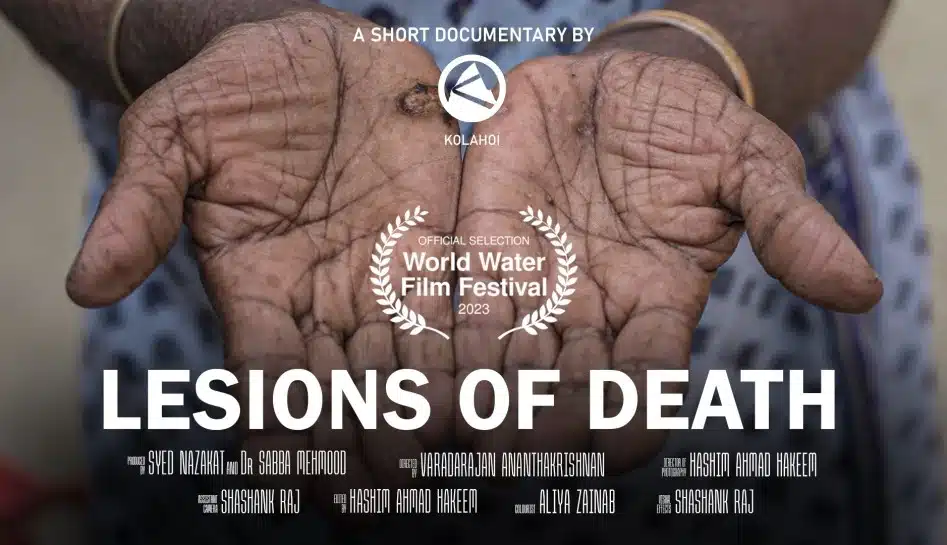The documentary was shot across several districts of West Bengal and spotlights the plight of the victims of the groundwater pollution
‘Lesions of Death’, a documentary produced by Kolahoi, the video vertical of Indian digital media company DataLEADS, on the worsening health crisis due to arsenic contamination in the underground water of a few districts in West Bengal, India, has been selected as an entry in the New York World Water Film Festival.
The first edition of the annual World Water Film Festival focuses on the United Nations World Water Day theme of groundwater visibility.
The contamination of underground water in West Bengal by arsenic is taking a grim toll on the lives of people across the state, as shown in a documentary on the issue.
‘Lesions of Death’ was shot across several districts of West Bengal and spotlights the victims of this pollution.
“Living means that disease is our constant companion. I am a constant patient. This time my younger son is getting sick. The older son died, and the younger one became ill,” one Sapura Bibi says in the film.
Alauddin Sarkar speaks darkly about the consequences of consuming arsenic-contaminated water: “The colour of the body gradually started turning black, then black blisters started appearing on the body.”
For nearly 35 years, the districts of West Bengal including Malda, Nadia, Murshidabad, North 24 Paraganas, South 24 Paraganas and Bardhaman are fighting arsenic contamination in underground water. Thousands of people here, have been consuming it for years – some close to three decades.
“It is a slow poison that eventually leads to a lifetime of pain, suffering and in quite a few cases, death,” reads one of the captions of the documentary.
The WHO has classified arsenic as one of ten chemicals of major public health concern. Arsenic-contaminated groundwater affects around 300 million people globally, the majority of whom live in India and Bangladesh.
Arsenic pollution in Indian villages has surged 145 percent over the last five years.
In recent years, the Indian government has made an effort to address the problem. In 2019, the government introduced the Jal Jeevan Mission, which aims to supply safe drinking water through taps to households in rural areas by 2024.
Groundwater is the main source of domestic and agricultural water for more than 250 million people living in the Bengal Basin, the floodplains, and deltas of the Ganges, Brahmaputra, and Meghna Rivers that lie in Bangladesh and India. Unless addressed on a war-footing the pollution poses a grave health challenge that threatens to grow ever bigger in the years to come.


















Add Comment